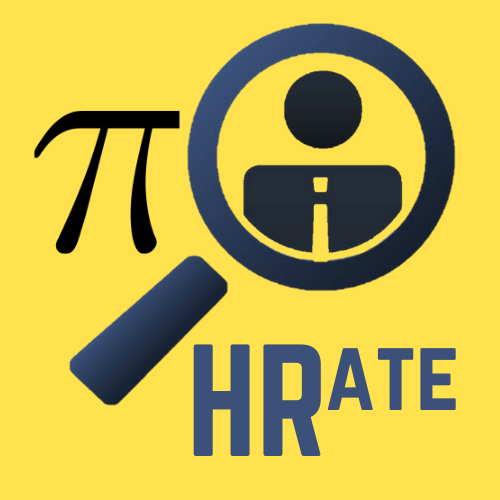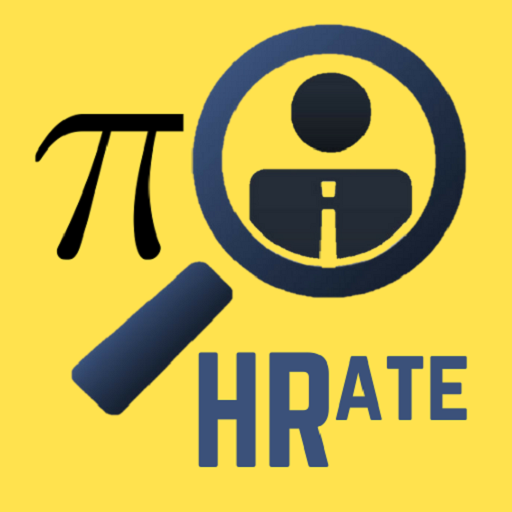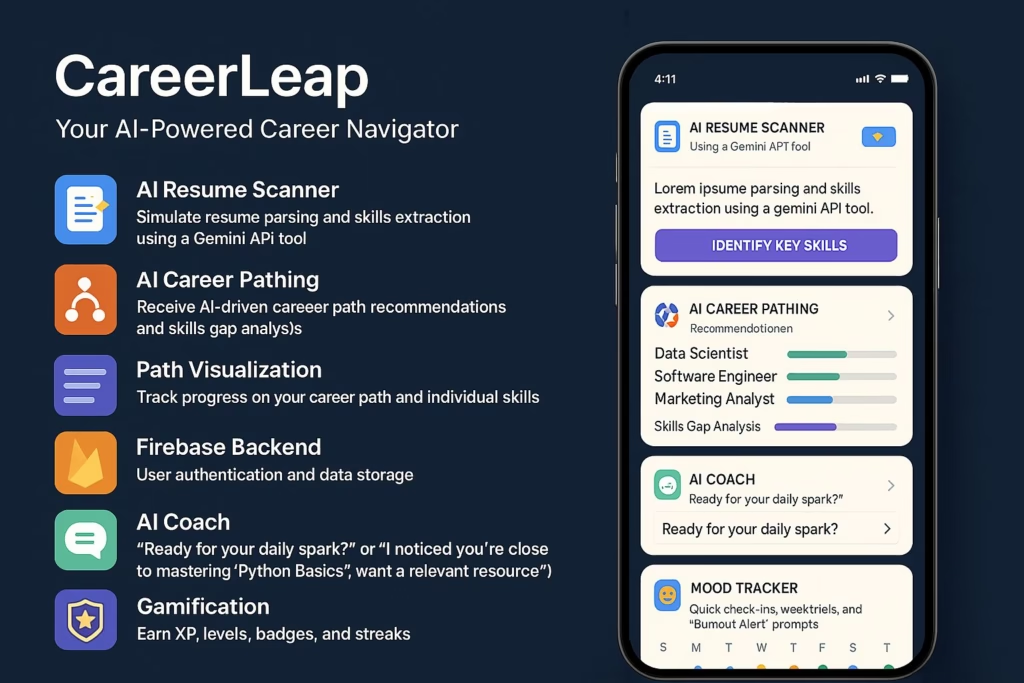Don’t Make These Common Mistakes: What to Avoid in Your Google Application

Landing a job at Google is a dream for many tech professionals worldwide. Known for its innovative culture, groundbreaking products, and emphasis on employee well-being, Google represents a pinnacle of career achievement. However, the sheer volume of applications received daily means the hiring process is incredibly competitive. Many talented individuals, brimming with potential, find their journey cut short before it even truly begins – simply because their application missed the mark. The difference between getting noticed and getting overlooked often lies in avoiding a few common, yet critical, mistakes. At piHRate, we understand the nuances of recruitment and HR automation, recognizing that even the most advanced systems can’t compensate for a fundamentally flawed application. This guide aims to equip you with the knowledge to navigate Google’s application process successfully, ensuring your qualifications and potential shine through, rather than getting lost in the noise. Let’s delve into the pitfalls you must steer clear of to maximize your chances of securing that coveted interview.
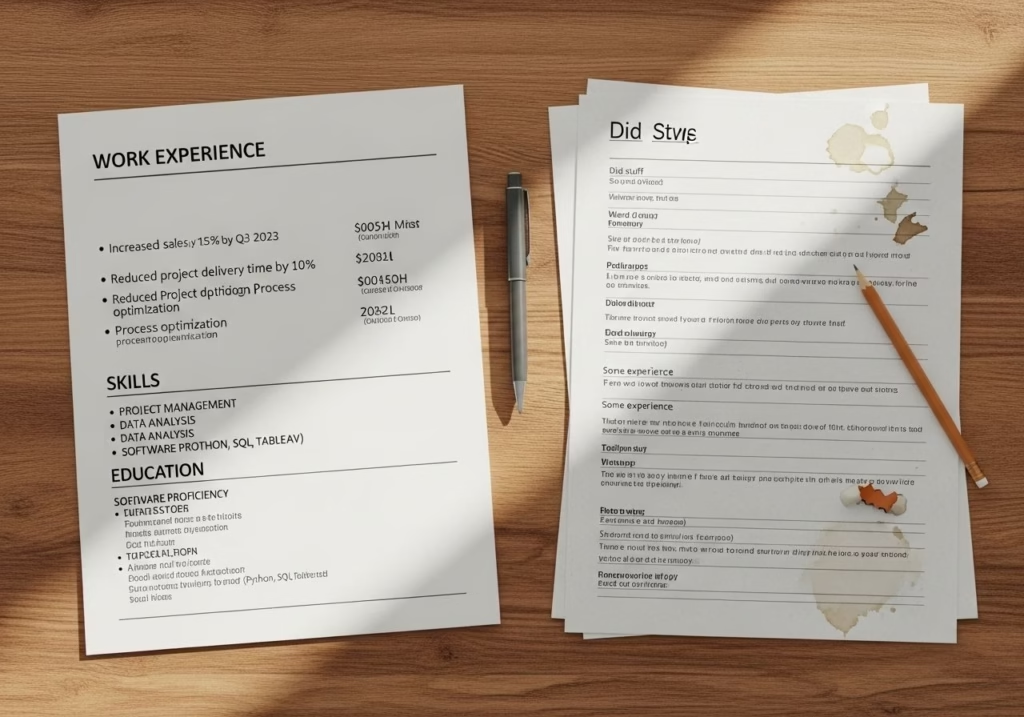
Mistake 1: Submitting a Generic Resume or CV
The digital age, coupled with the sheer scale of companies like Google, means that Applicant Tracking Systems (ATS) are the first gatekeepers for most applications. These systems are designed to sift through thousands of resumes, identifying candidates whose profiles most closely match the specific requirements of the job description. Submitting a generic resume is akin to sending a blank check – it lacks specificity and fails to communicate your value proposition effectively.
- Why it Fails: An ATS will likely filter out your application if it doesn’t contain the precise keywords, skills, and qualifications listed in the job description. Recruiters, when they do review resumes manually, can quickly identify applications that haven’t been tailored. They’re looking for evidence that you’ve understood the role and believe you’re a strong fit, not just someone casting a wide net. A generic resume suggests a lack of genuine interest or effort, signaling that you might not be a dedicated candidate for this specific role at Google.
- The piHRate Perspective: Just as HR automation tools help companies streamline talent acquisition by filtering candidates based on predefined criteria, your application needs to meet those criteria explicitly. If the system (or the human reviewer) can’t easily find the match, you’re likely out.
- How to Avoid It:
- Deconstruct the Job Description: Print it out, highlight keywords, required skills (technical and soft), desired qualifications, and responsibilities. Pay close attention to action verbs used.
- Mirror Keywords: Integrate relevant keywords naturally throughout your resume, especially in your summary/profile, experience descriptions, and skills section. Don’t just stuff keywords; ensure they make sense contextually.
- Quantify Everything: Google values impact and data. Instead of saying “Improved system performance,” state “Improved system performance by 15% by implementing X optimization, reducing latency by Y milliseconds.” Use numbers, percentages, and concrete metrics whenever possible.
- Tailor Your Summary/Profile: Start with a concise summary that immediately highlights your most relevant qualifications and career goals, aligning them with the specific role you’re applying for.
- Showcase Relevant Projects: If you have personal projects, open-source contributions, or academic work that demonstrates skills pertinent to the Google role, feature them prominently.
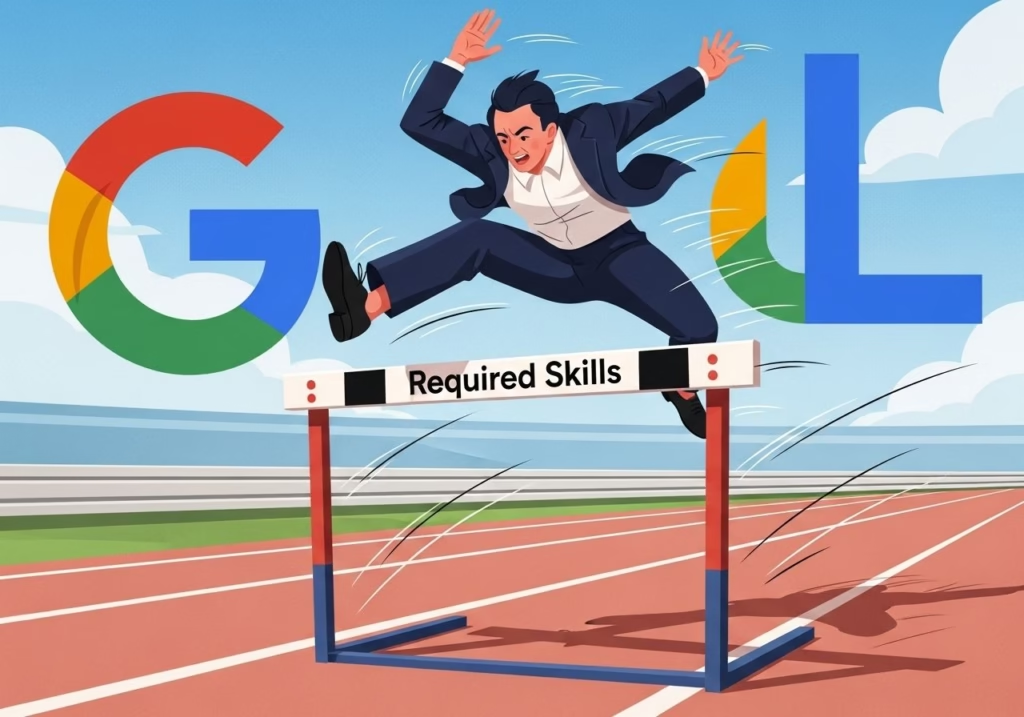
Mistake 2: Misalignment Between Your Skills and the Job Requirements
This mistake goes beyond just keywords; it’s about the fundamental match between what you bring to the table and what Google is looking for in a particular position. Applying for a senior software engineering role when your experience is primarily in customer support, without clearly articulating transferable skills, is a prime example.
- Why it Fails: Google hires for specific needs. If your resume doesn’t clearly demonstrate that you possess the core competencies required for the role – whether technical (e.g., proficiency in Python, C++, distributed systems) or functional (e.g., project management, data analysis, user research) – it signals a mismatch. Recruiters and hiring managers look for evidence that you can perform the job duties effectively from day one or with minimal ramp-up. Misrepresenting or failing to showcase relevant skills can lead to immediate disqualification.
- The piHRate Perspective: Our expertise in HR automation highlights the importance of defining clear job requirements and matching candidates accurately. Applying for roles where there’s a significant skills gap, or failing to bridge that gap with transferable skills, is a common reason for rejection, regardless of the sophistication of the hiring platform.
- How to Avoid It:
- Honest Self-Assessment: Before applying, honestly evaluate if you meet the minimum qualifications listed. If you’re significantly underqualified, it might be better to seek roles that align better with your current skill set.Highlight Transferable Skills: If you have experience in a related field, focus on transferable skills. For instance, if moving from academia to industry, emphasize research methodologies, data analysis, presentation skills, and problem-solving abilities. Use the job description to frame your past experiences in the context of the new role’s requirements.Employ the STAR Method: Structure your experience bullet points using the STAR method (Situation, Task, Action, Result). This provides concrete examples of how you applied specific skills to solve problems or achieve outcomes. For example: “Led a cross-functional team (Situation) to develop a new feature (Task) using Agile methodologies and Python (Action), resulting in a 20% increase in user engagement (Result).”Understand Google’s Core Competencies: Research Google’s widely recognized core competencies, often referred to broadly as “Googliness,” which includes things like leadership, problem-solving, adaptability, collaboration, and intellectual curiosity. Weave examples demonstrating these into your resume and cover letter.

Mistake 3: The “Shotgun” Approach – Applying for Too Many Roles
In a quest to increase odds, many candidates adopt a scattergun approach, applying to every open position at Google that vaguely aligns with their background. This strategy, however, is often counterproductive.
- Why it Fails: Google receives an overwhelming number of applications. Applying to numerous roles indiscriminately dilutes the quality and tailoring of each individual application. It signals a lack of focus and genuine interest in any specific role or team. Recruiters can often tell when an application is generic and sent widely. Furthermore, receiving multiple rejections across different roles might create a negative pattern that could potentially impact future applications within Google’s system. Google prefers candidates who demonstrate thoughtful consideration and strategic career planning.
- The piHRate Perspective: Efficiency in recruitment isn’t just about volume; it’s about quality matching. Applying strategically, much like optimizing a recruitment workflow, ensures that effort is focused where it counts most.
- How to Avoid It:
- Strategic Focus: Identify 1-3 positions that genuinely excite you and for which you are a strong candidate. Prioritize roles where your skills and experience are a near-perfect match, or where you can convincingly demonstrate the potential to excel with minimal ramp-up.
- Thorough Research: Before applying, dive deep into the specific role, the team it belongs to, and the product or service it supports. Understand the challenges they face and how your contribution could make an impact.
- Align with Career Goals: Consider how the role fits into your broader career aspirations. Applying for positions that genuinely align with your long-term goals makes your application more authentic and compelling.

Mistake 4: Neglecting the Cover Letter (or Writing a Poor One)
While some companies are moving away from mandatory cover letters, for highly competitive roles at companies like Google, a well-crafted cover letter can be your secret weapon. Many candidates either skip it entirely or submit a boilerplate document that offers little insight.
- Why it Fails: The cover letter is your opportunity to inject personality, passion, and context into your application. It allows you to directly address why you want to work at Google, why you are interested in this specific role, and how your unique background and experiences make you an ideal candidate. A generic or poorly written cover letter misses this chance to connect with the recruiter on a more personal level, often failing to articulate the “why” behind your application.
- The piHRate Perspective: Effective HR communication involves telling a story. A cover letter is a narrative tool that, when used correctly, can significantly enhance a candidate’s profile beyond the structured data of a resume.
- How to Avoid It:
- Tell Your Story: Use the cover letter to weave a compelling narrative about your career journey, your passion for technology and Google’s mission, and your specific interest in the role.
- Address “Why Google?” and “Why This Role?”: Be specific. Reference Google’s products, values, or recent innovations that resonate with you. Explain how the responsibilities of the role align with your skills and career aspirations.
- Showcase Cultural Fit: Briefly touch upon how your working style and values align with Google’s culture. Mention specific projects or experiences that demonstrate qualities like innovation, collaboration, or user focus.
- Keep it Concise and Professional: Aim for 3-4 well-structured paragraphs. Ensure it’s error-free and professionally formatted.

Mistake 5: Failing to Research Google’s Culture and Values
Google isn’t just another tech company; it has a distinct culture and set of values that permeate its operations and hiring decisions. Ignoring this aspect means you won’t know how to present yourself authentically or demonstrate your potential fit.
- Why it Fails: Google famously values “Googliness”—a combination of traits like intellectual curiosity, problem-solving ability, comfort with ambiguity, collaboration, and a drive to make an impact. If your application and subsequent interview responses don’t reflect an understanding of these cultural elements, your candidacy may seem disconnected. Recruiters look for candidates who not only possess the technical skills but also align with the company’s ethos and can thrive in its unique environment.
- The piHRate Perspective: Understanding a company’s culture is paramount in recruitment strategy. It’s about finding the right fit, not just the right skills. Automated systems might not capture cultural nuances, but human recruiters certainly do.
- How to Avoid It:
- Explore Google’s Official Channels: Spend time on Google’s Careers site, “About Us” pages, blog posts (like the official Google blog), and even their investor relations sections. Look for their stated mission, values, and principles.
- Understand “Googliness”: While the term itself might evolve, focus on the underlying principles: a proactive, collaborative, and impact-driven approach. Look for examples in your own experience that demonstrate these qualities.
- Research Specific Teams: If you know the team or product area you’re applying for, try to find information specific to that area. What are their current projects or challenges?
- Connect Your Experience: Think about how your past experiences align with these values. Did you lead a project? Solve a complex problem collaboratively? Adapt to a major change? Frame these experiences to highlight your alignment with Google’s culture.

Mistake 6: A Neglected or Unprofessional Online Presence
In today’s digital-first world, your online footprint is an extension of your professional identity. Companies like Google often conduct background checks that include reviewing candidates’ social media profiles and professional networks.
- Why it Fails: An unprofessional online presence—whether it’s inappropriate content on social media, outdated LinkedIn profiles, or a lack of a professional digital identity—can raise red flags. It might suggest poor judgment, a lack of professionalism, or even create inconsistencies with the information provided in your application. Conversely, a well-maintained LinkedIn profile can significantly boost your candidacy.
- The piHRate Perspective: Digital transformation impacts recruitment profoundly. Ensuring your professional online presence is polished is as crucial as optimizing your resume for ATS.
- How to Avoid It:
- Audit Your Social Media: Review all your public social media profiles (Facebook, Instagram, Twitter, etc.). Remove or privatize any content that could be perceived as unprofessional, controversial, or offensive. Ensure your privacy settings are robust.
- Optimize Your LinkedIn Profile: Make sure your LinkedIn profile is complete, up-to-date, and professional. Use a clear, professional photo, write a compelling summary, detail your experience with quantifiable achievements, and seek recommendations from colleagues or managers. Ensure it aligns with your resume.
- Consider a Personal Website/Portfolio: For roles like design, engineering, or content creation, a personal website or online portfolio showcasing your work can be incredibly impactful. Ensure it’s well-designed and easy to navigate.
Mistake 7: Exaggerating or Being Dishonest
While enthusiasm is good, fabricating or exaggerating qualifications, skills, or achievements on your resume or during interviews is a critical mistake that can have severe consequences.
- Why it Fails: Google employs rigorous background checks and reference checks. Interviewers are skilled at probing deeper into your experiences, often asking detailed questions that can quickly reveal inconsistencies or falsehoods. If discovered during the application process, it usually results in immediate disqualification. If discovered after hiring, it can lead to termination. Honesty and integrity are foundational values.
- The piHRate Perspective: Ethical recruitment and HR practices demand transparency. Building trust starts with an honest application.
- How to Avoid It:
- Be Truthful: Accurately represent your skills, experience, education, and accomplishments.
- Focus on Strengths: Instead of inflating weak areas, focus on highlighting and elaborating on your genuine strengths and achievements.
- Embrace Learning: If you lack a specific skill but are eager to learn, frame it positively. For example, instead of claiming expertise you don’t have, mention your proactive learning initiatives related to that skill.
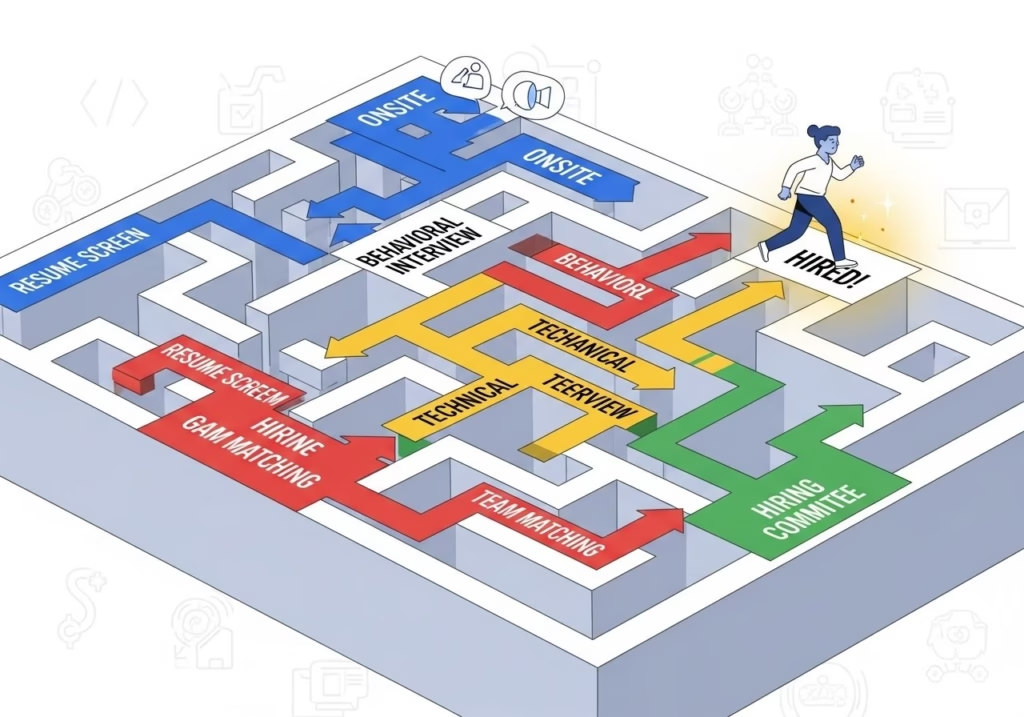
Mistake 8: Not Preparing for the Interview Process (Even Before Applying)
Many candidates view the application submission as the primary hurdle. However, for Google, the application is merely the first step in a multi-stage, often challenging, interview process. Failing to prepare mentally for this even before applying can set you back.

- Why it Fails: Google’s interview process is known for its rigor, encompassing behavioral interviews (assessing past experiences and how you handle situations), technical interviews (for engineering roles, involving coding, algorithms, data structures, system design), and problem-solving assessments. Not anticipating this complexity means you might be caught off guard, unable to articulate your thoughts clearly, or unable to demonstrate your problem-solving capabilities effectively.
- The piHRate Perspective: A comprehensive talent acquisition strategy includes interview preparation. Automation can schedule interviews, but human preparedness is key to success.
- How to Avoid It:
- Understand the Process: Research Google’s typical interview structure for the role you’re targeting. Understand the types of questions you can expect (behavioral, technical, situational).Practice the STAR Method: This is crucial for behavioral interviews. Prepare several detailed examples using STAR for common questions like “Tell me about a time you failed,” “Describe a challenging project,” or “How do you handle conflict?”Sharpen Technical Skills: For technical roles, dedicate time to practicing coding problems (e.g., on platforms like LeetCode, HackerRank), studying data structures and algorithms, and understanding system design principles.Prepare Thoughtful Questions: Have a list of insightful questions ready to ask the interviewer about the role, the team, the culture, or the company’s future. This shows engagement and genuine interest.
Mistake 9: Overlooking Proofreading and Final Checks
This might seem minor compared to the others, but typos, grammatical errors, and formatting inconsistencies can severely undermine your application.
- Why it Fails: Attention to detail is highly valued at Google. Errors in your application suggest carelessness, a lack of professionalism, or an inability to meticulously follow instructions – qualities that are undesirable in any role, especially at a data-driven tech giant.
- The piHRate Perspective: Quality assurance is fundamental in HR automation and recruitment. Ensure your application materials reflect that same commitment to accuracy.
- How to Avoid It:
- Multiple Proofreading Rounds: Read your resume, cover letter, and any other submitted documents multiple times. Read them aloud to catch awkward phrasing.
- Utilize Tools: Use grammar and spell-checking software (like Grammarly) but don’t rely on them solely; they can miss context.
- Get a Second Opinion: Ask a trusted friend, mentor, or career coach to review your application materials for errors and clarity. Ensure formatting remains consistent across all documents.
Conclusion: Strategize for Success
Applying to Google is a marathon, not a sprint. By understanding and actively avoiding these common mistakes, you significantly increase your chances of moving through the initial screening stages and landing an interview. Remember that Google seeks candidates who are not only technically proficient but also passionate, adaptable, detail-oriented, and aligned with their unique culture. Treat each application as a strategic project: research diligently, tailor meticulously, showcase your genuine value, and maintain unwavering integrity. The journey requires persistence, but by focusing on quality over quantity and demonstrating a clear understanding of what Google values, you can significantly improve your odds of turning that dream into a reality. Visit piHRate.com for more insights into optimizing your career journey and understanding the evolving landscape of recruitment.
- Stop Preparing for the Google Interview of 2020. Here’s What Changed.
- We Asked 100 Google Engineers How They Use Gemini: Here’s What We Learned
- Why Your Next Promotion Might Depend on Your AI Literacy (Not Your Code)
- From Marketing to Machine Learning: How One Googler Reinvented Their Career
- A Tuesday at Google: Why Our Offices Are Buzzing Again
